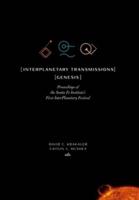Publisher's Synopsis
An engineering feasibility study was made of aeroacoustic inserts designed for large-scale acoustic research on aircraft models in the 80 by 120 foot Wind Tunnel at NASA Ames Research Center. The advantages and disadvantages of likely designs were analyzed. Results indicate that the required maximum airspeed leads to the design of a particular insert. Using goals of 200, 150, and 100 knots airspeed, the analysis indicated a 30 x 60 ft open-jet test section, a 40 x 80 ft open jet test section, and a 70 x 100 ft closed test section with enhanced wall lining, respectively. The open-jet inserts would be composed of a nozzle, collector, diffuser, and acoutic wedges incorporated in the existing 80 x 120 test section. The closed test section would be composed of approximately 5 ft acoustic wedges covered by a porous plate attached to the test section walls of the existing 80 x 120. All designs would require a double row of acoustic vanes between the test section and fan drive to attenuate fan noise and, in the case of the open-jet designs, to control flow separation at the diffuser downstream end. The inserts would allow virtually anechoic acoustic studies of large helicopter models, jets, and V/STOL aircraft models in simulated flight. Model scale studies would be necessary to optimize the aerodynamic and acoustic performance of any of the designs. In all designs studied, the existing structure would have to be reinforced. Successful development of acoustically transparent walls, though not strictly necessary to the project, would lead to a porous-wall test section that could be substituted for any of the open-jet designs, and thereby eliminate many aerodynamic and acoustic problems characteristic of open-jet shear layers. The larger size of the facility would make installation and removal of the insert components difficult. Consequently, scheduling of the existing 80 x 120 aerodynamic test section and scheduling of the open-jet test section would likely be made on an ann...










